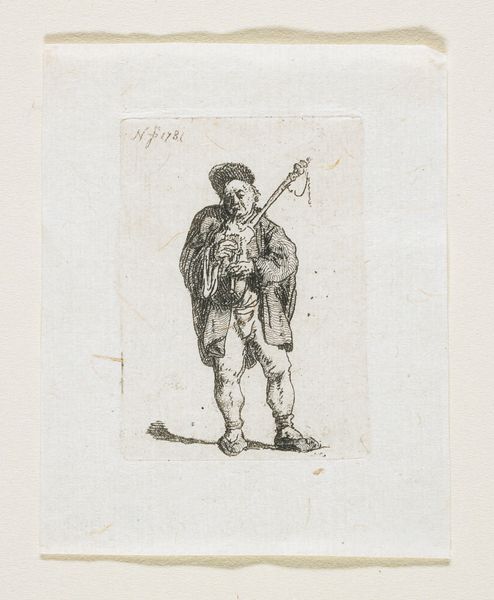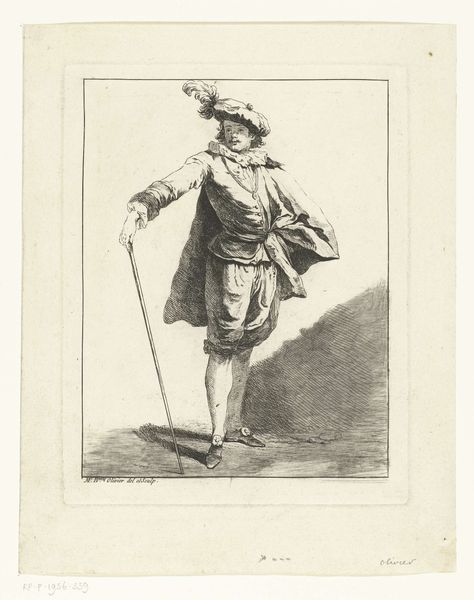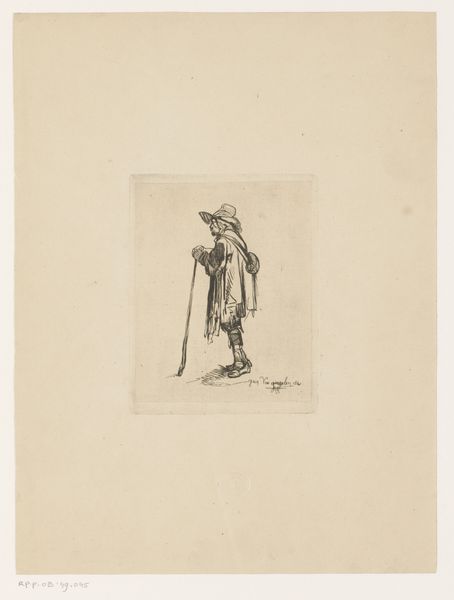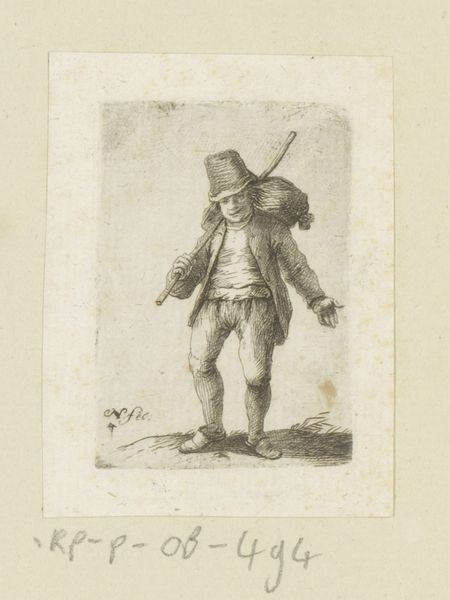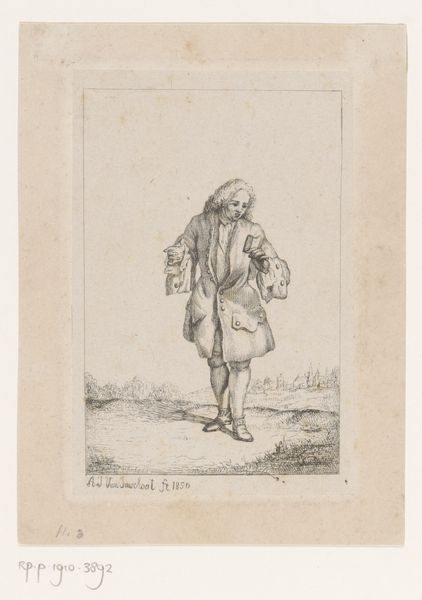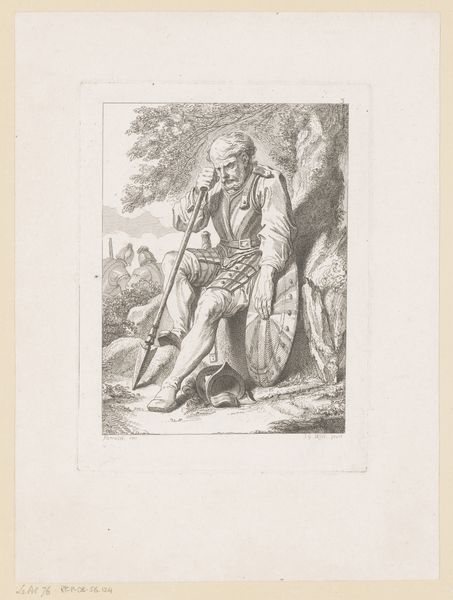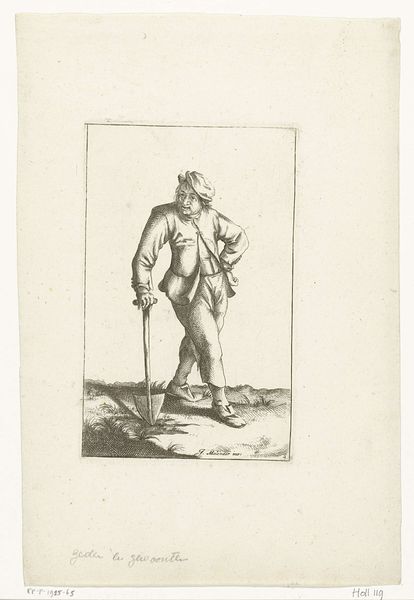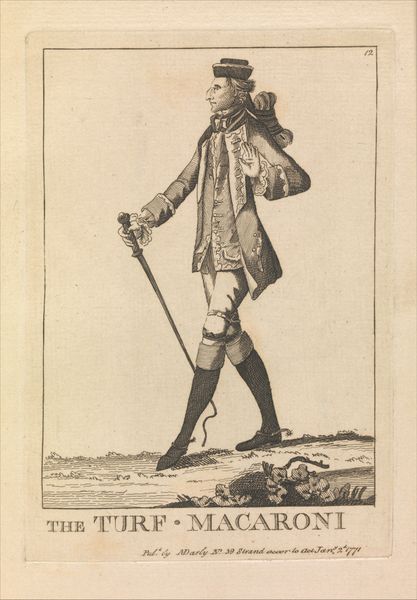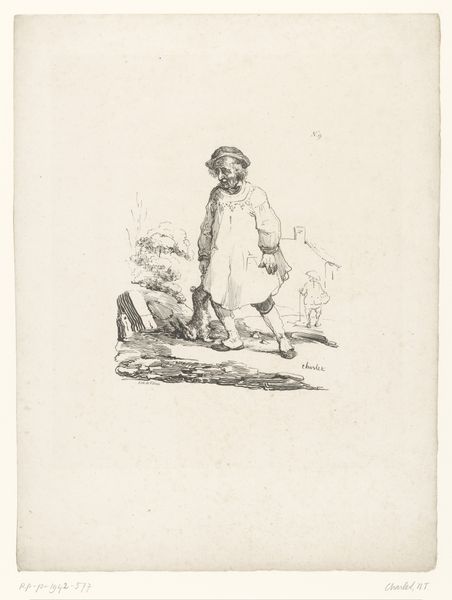
print, etching, engraving
#
portrait
#
neoclacissism
# print
#
etching
#
genre-painting
#
engraving
Dimensions: height 183 mm, width 135 mm
Copyright: Rijks Museum: Open Domain
Curator: Robert Brichet's print, dating from around 1783 or 1784, is titled "Standing Man with a Walking Stick in a Garden." Editor: Immediately, I'm struck by the almost tangible feeling of age emanating from the image—the way the fine lines seem to etch not just the subject's likeness, but the passage of time itself. Curator: Indeed. Brichet has used etching and engraving techniques to create a portrait that sits firmly within the Neoclassical movement. Notice how the figure's pose, while casual, also possesses a studied grace. Editor: What stands out for me, though, is the apparent craft of it all. The sheer labor of cutting those delicate lines into a plate and the kind of social context to allow for production of such an artwork is considerable. What sort of labor underpinned Brichet's practice here, do you imagine? Curator: An interesting observation. While it’s vital to understand that context, looking at the internal elements, we notice the composition creates a pleasing visual balance. The figure's slightly stooped posture and the curve of the walking stick are echoed in the gentle slope of the garden landscape in the background, as if Brichet created his lines almost musically. Editor: But the materiality itself—the plate, the inks, the paper it's printed on—each element carries its own history. Knowing what went into sourcing, production, distribution opens up fascinating avenues of inquiry regarding production in the eighteenth century, wouldn't you agree? Curator: Perhaps. But returning to the purely visual, note how Brichet manipulates light and shadow to create a sense of depth. Editor: Ultimately, the means through which this print was realised—etching, engraving, the choice of paper—speaks volumes about the economics of artmaking during that period and which influences were prioritized for wider production of art in Brichet’s circle. It opens more doors than just admiration of lines! Curator: You provide food for thought on what one must keep in mind, and I return to the simple, but undeniable skill and craft of creating a formal arrangement with so much attention to form and tone that so perfectly captures an essence, perhaps timeless.
Comments
No comments
Be the first to comment and join the conversation on the ultimate creative platform.

